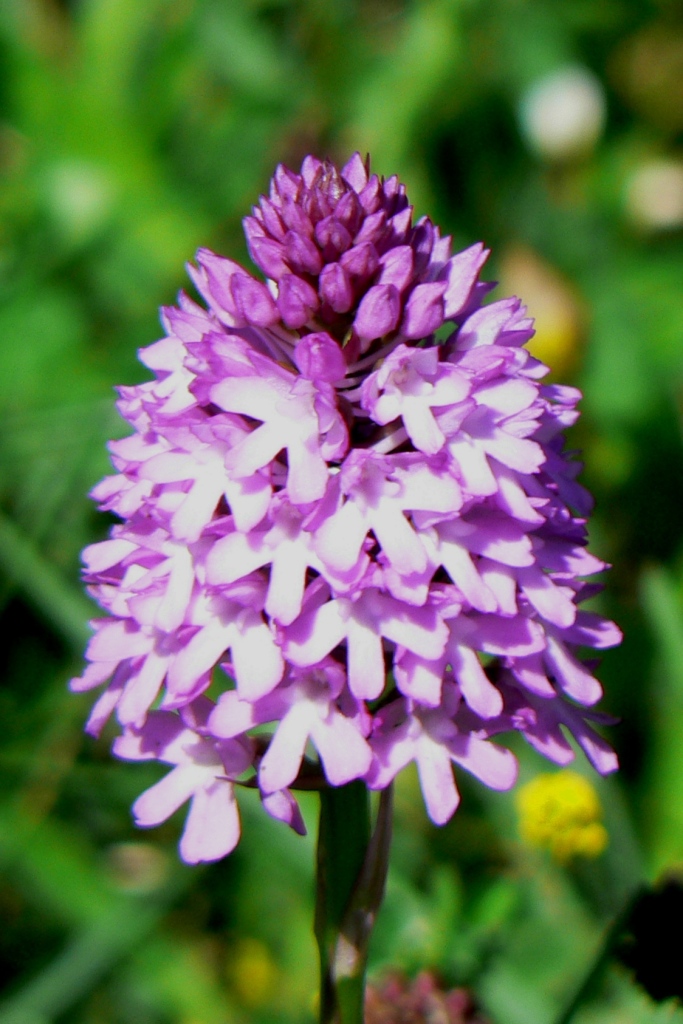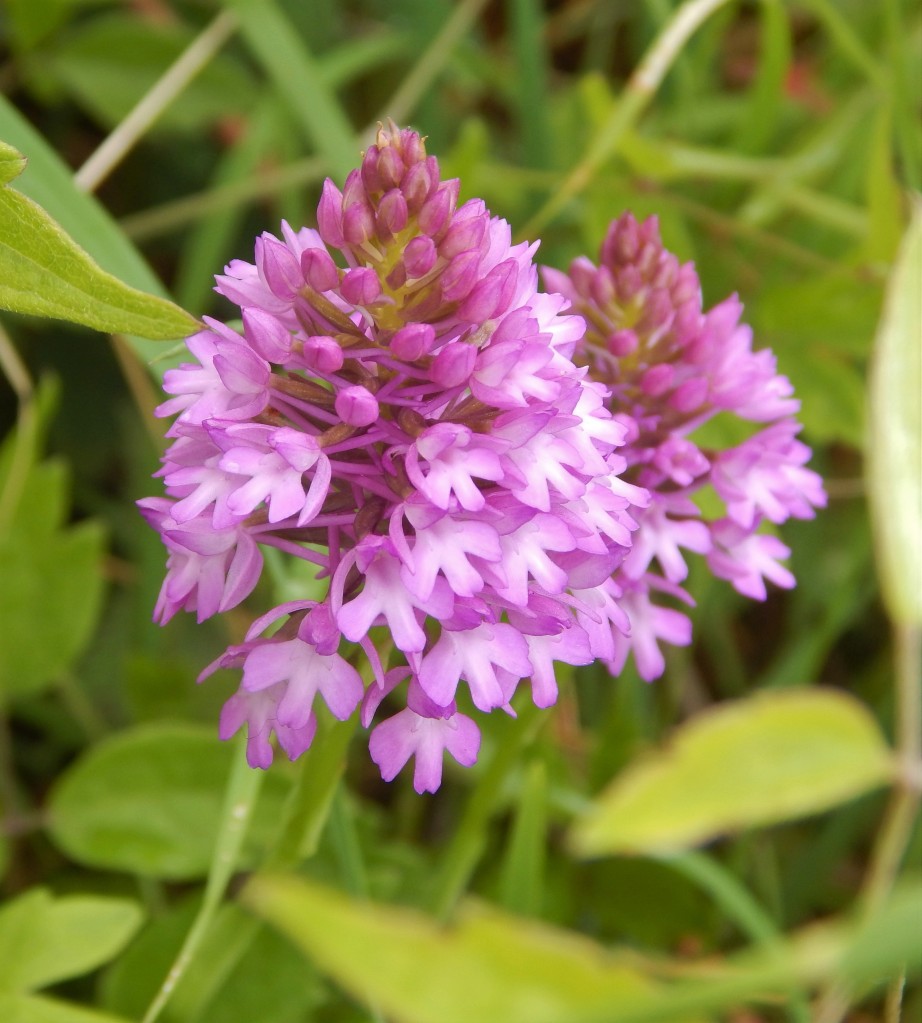
[020] Anacamptis pyramidalis, Pyramidal Orchid
Introduction
Anacamptis pyramidalis, the Pyramidal Orchid, is a relatively common British Orchid found on open grassland such as Commons. It is a small, perennial, monocot plant with a purple inflorescence shaped like a broad pyramid. (Mathematically it is more like a cone but not far from a pyramid.)
Taxonomy
Kingdom – Plants
Division – Vascular Plants
Class – Flowering Plants
Order – Asparagales
Family – Orchidaceae
Genus – Anacamptis
Scientific Name – Anacamptis pyramidalis
Name
The word ‘orchid’ comes via new Latin from Ancient Greek ‘orchis’ meaning testicle, apparently from the shape of the roots. This word replaced the Middle English ‘ballockwort,’ with similar etymology.
Anacamptis comes from the Greek for ‘bend forward’ and the Latin ‘pyramidalis’ refers to the shape. Taxonomists are never afraid to mix up Greek and Latin.
Orchids
The Orchid family, Orchidaceae is very widespread and diverse. They can be found almost everywhere and in all habitats. It is the second largest family of Flowering Plants (after the Asters) and has about 10% of the total species. About a third of the monocot species are Orchids.
Many Orchids are cultivated and there are about 100 000 hybrid and cultivar varieties.
They may have one or more erect stems, sometimes quite tall, that bear flowers and then die back.
Pyramidal Orchid
The Pyramidal Orchid grows to about twenty centimetres and is unnoticed in surrounding vegetation apart from its flower stem. About fifty to a hundred flowers make up the pyramidal shape, generally coloured from pink to purple, sometimes almost white.
Habitat and use
The Pyramidal orchid is native to much of Europe and Asia and is found in open meadows and grassland. It is now common in Britain in roadside verges and is very common on the Isle of Wight.
Other Notes
Unlike the related Common Spotted Orchid this flower seems to grow as an isolated single plant.


See also
Is relative [112] the Common Spotted Orchid is much more common and often both appear at the same location.
